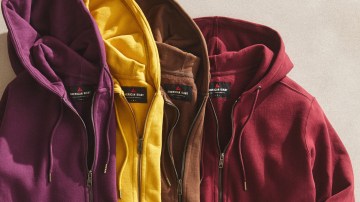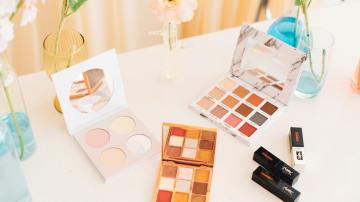At Nvidia’s Global Artificial Intelligence 2025 conference on March 17-21, consumer goods conglomerate Unilever took to the stage to announce that it is scaling its use of digital twins — or photorealistic 3D versions of products — to reshape how it creates and deploys brand content.
The initiative is part of a wider drive for operational efficiency spurred by the company’s lack of growth over the last couple of quarters. In February, Unilever reported its full-year results for 2024, showing a 2.3% increase in turnover to €60.8 billion ($65.5 billion). While volumes were up, the rise largely came from cost-cutting and margin expansion.
The pressure to maintain profitability amid rising media investment has led the company to re-evaluate how it creates content at scale. On its February earnings call, Unilever confirmed that it increased marketing and media investment by more than €600 million ($647 million) last year, a notable uptick that CEO Hein Schumacher framed as critical for growth. According to a Financial Times report from March 10, Unilever is funneling much of that investment into digital channels and influencer partnerships to remain competitive with beauty-first rivals like L’Oréal and Procter & Gamble.
Alongside that spending, there’s a push to make content production smarter, faster and less redundant. Enter digital twins and a more automated content creation pipeline.
A digital twin, in marketing terms, is a detailed 3D rendering of a product that can be modified and reused across multiple campaign formats. Rather than shooting a physical product in a studio, Unilever’s teams now work with a master Universal Scene Description file that contains every variant of the product, from regional packaging to label language. Built using 3D developer platform Nvidia Omniverse, the digital twin is accurate enough to be used across advertising formats, from TV to e-commerce to social.
“It’s about creating one universal file that becomes a raw material for any creative brief,” Selina Sykes, Unilever’s vp and head of digital marketing and social-first for beauty and wellbeing, told Glossy. “Local teams can brief what they need, and the asset can be generated and deployed quickly, whether that’s for Instagram, Amazon or a billboard.”
The benefit isn’t just consistency across markets — it’s also speed and cost. According to Sykes, the company is now producing content roughly twice as fast and at around 50% less cost when digital twins are used. These efficiencies are being seen most clearly in the beauty and wellbeing division, which includes brands like Dove, Tresemmé, Vaseline and Clear
In Thailand late last year, a Tresemmé campaign showed an 87% drop in content production costs when using digital twins, alongside a 5% increase in purchase intent. According to internal performance metrics shared by the company, digital twin assets are also delivering higher engagement, at double the click-through rate and three times the average viewing time, compared to traditional product visuals.
“This is part of a broader effort to simplify content workflows,” Sykes said. “It allows us to reallocate resources from repetitive execution to more strategic, creative thinking.”
Unilever is applying this logic to other parts of the business, too. Its 2-year-old GAP 2030 strategy, which stands for Grow, Accelerate, Power, aims to remove duplication across functions, reduce unnecessary SKUs and drive end-to-end efficiency.
At the same time, the company is balancing rising spend on media and influencer marketing with internal pressure to prove ROI. With digital twins, fewer assets need to be created from scratch, and content can be refreshed with more agility — a vital capability when social trends evolve daily.
The rollout began in 2024, with a focus on innovation pipelines and hero SKUs. “You wouldn’t create a twin for a delisting product,” said Sykes. “We focus on launches, redesigns and products we know will need ongoing content support.”
The production of digital twins is still largely handled by agencies, with developer agency Collective World being a key partner for Unilever in its digital twin project. But Unilever has also integrated digital twins into its internal content systems. Teams across global markets can now access digital twins through a central platform, making briefings and turnarounds far more streamlined than the previous model of studio photography and 2D edits.
“We call it a content supply chain,” said Sykes. “The idea is to treat content with the same operational discipline as you would a product — something that can be systematized without losing its impact.”
Despite the efficiencies, the shift hasn’t come without its limitations. Creating high-quality twins still requires a skilled 3D design capability, which has kept some of the work external for now. And while early signs suggest improved performance, broader consumer perception studies will be needed to fully assess long-term value.
Still, digital twins have become a significant part of Unilever’s Beauty and Wellbeing group’s strategy for 2025. The tech also offers potential for further integration across R&D and supply chain logistics, though Sykes was clear that those applications are still in exploratory stages.
“We’re seeing what else is possible,” she said. “But marketing is where we’ve scaled it first, because that’s where we had an immediate need and clear benefit.”
The move reflects a wider industry trend: Global brands are leaning into infrastructure-level AI tools, not just for experimentation but also for measurable business gains. As AI adoption moves beyond chatbot novelty, digital twins represent a practical step toward a more responsive and efficient creative model, one that aligns with both consumer expectations and investor demands.
“This is not about replacing creativity,” Sykes said. “It’s about removing barriers so teams can spend more time on ideas that matter.”




